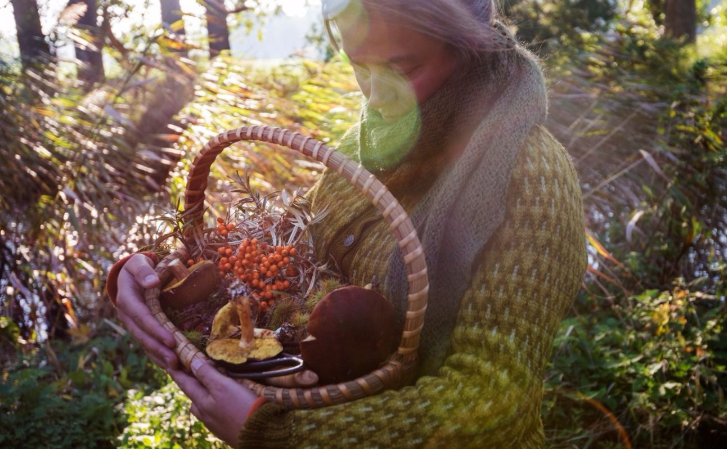Five Foraging Essentials

Edible plants are fun to forage. A walk in the woods is the perfect way to find these wild, edible plants. Foraging for food is safe once you know what you’re doing and what you’re looking for. Read on for our top five tips on how to get the best wild food, fresh for your table.
1) Safety
It is essential to have a sound knowledge of wild plants and mushrooms. Any that you are unsure about you should leave well alone, as these could be poisonous rather than edible, and could cause illness and bad reactions in certain individuals.
i) Know your plants – The umbellifer family includes the deadly Water Dropwart, Cowbane, Henbane and Hemlock, so it is a good idea to familiarize yourself with these plants. If you are not absolutely confident in plant identification, leave well alone, as picking these could prove fatal.
– If worried about whether a plant could cause a reaction, try only a small amount of the new wild food on your tongue and don’t digest. Wait 30 minutes to see if any allergic reactions occur. If well, eat a small piece of the plant and again wait 30 minutes.
– Sorrel – This contains chemicals that are body does not react well with, so shouldn’t be consumed on a regular basis.
ii) Take care when foraging
– Don’t forage in high risk areas, like sea cliffs.
– When foraging on the coast, know the tide times and where the quicksand lies.
– When foraging in urban areas, be aware that previous site uses for heavy industry may have contaminated the ground, which could effect the wild flowers and food to be foraged.
– When foraging in gardens and allotments, keep an eye out for herbicide and insecticide usage. Wilting leaves or whitish deposits on leaves are sure-fire signs.
– When foraging in the verges and hedges of a busy road, be aware that these will have been contaminated with the pollutants from the traffic. The nicest fruit is always furthest away, and highest up.
– When foraging in the country, no waterside plants should be taken if near sewage or industrial polluters. – Always wash foraged plants.
2) The Law
There are a few essential guidelines that all foragers should follow:
– Unless permission has been given by the landowner, it is illegal to pick any native plant.
– Certain endangered species (listed at www.jncc.gov.uk) are off limits. Under no circumstances are they to be uprooted, dug up or interfered with.
– Special permission is needed when foraging in national parks, nature reserves or land owned by the National Trust, Ministry of Defence and the Crown.
– All plants are the ‘property’ of the landowner on which it grows so permission is needed to take it, or parts of it.
– Permission is needed to enter private land.
3) Foraging Etiquette
So as not to tread on anybody’s toes, there are a few simple codes of conduct foragers should stick by: – Don’t be greedy and only pick what is needed.
– Forage over a wide area, rather than just one space and leave some for other foragers, the birds, bees and animals.
– Don’t strip individual plants of their flowers, leaves, fruits or nuts.
– Don’t disturb the natural surrounding habitat.
4) Equipment
There are a few items that a forager should take with them. These include:
– Carrier bags: to store the goods in.
– Walking stick: to touch those hard to reach areas.
– Recycled ice cream container: to store blackberries in.
– Folding knife: to cut off mushrooms, leaves, flowers and seed heads.
– Scissors: as above.
– Brush: to whisk off any unnecessary dirt.
– Gloves: to pick plants with thorns and to tackle nettles.
5) The Seasons
Little wild food is available at the end of a dry summer, but wait a week or two and there will be loads in autumn– including those endless amounts of blackberries! Be aware of how each season can affect what foraging foods are available and when it’s best to head out.
For more great tips and advice on foraging, read Foraging: A Practical Guide to Finding and Preparing Free Wild Food (£8.99, Robinson) by John Lewis-Stempel


